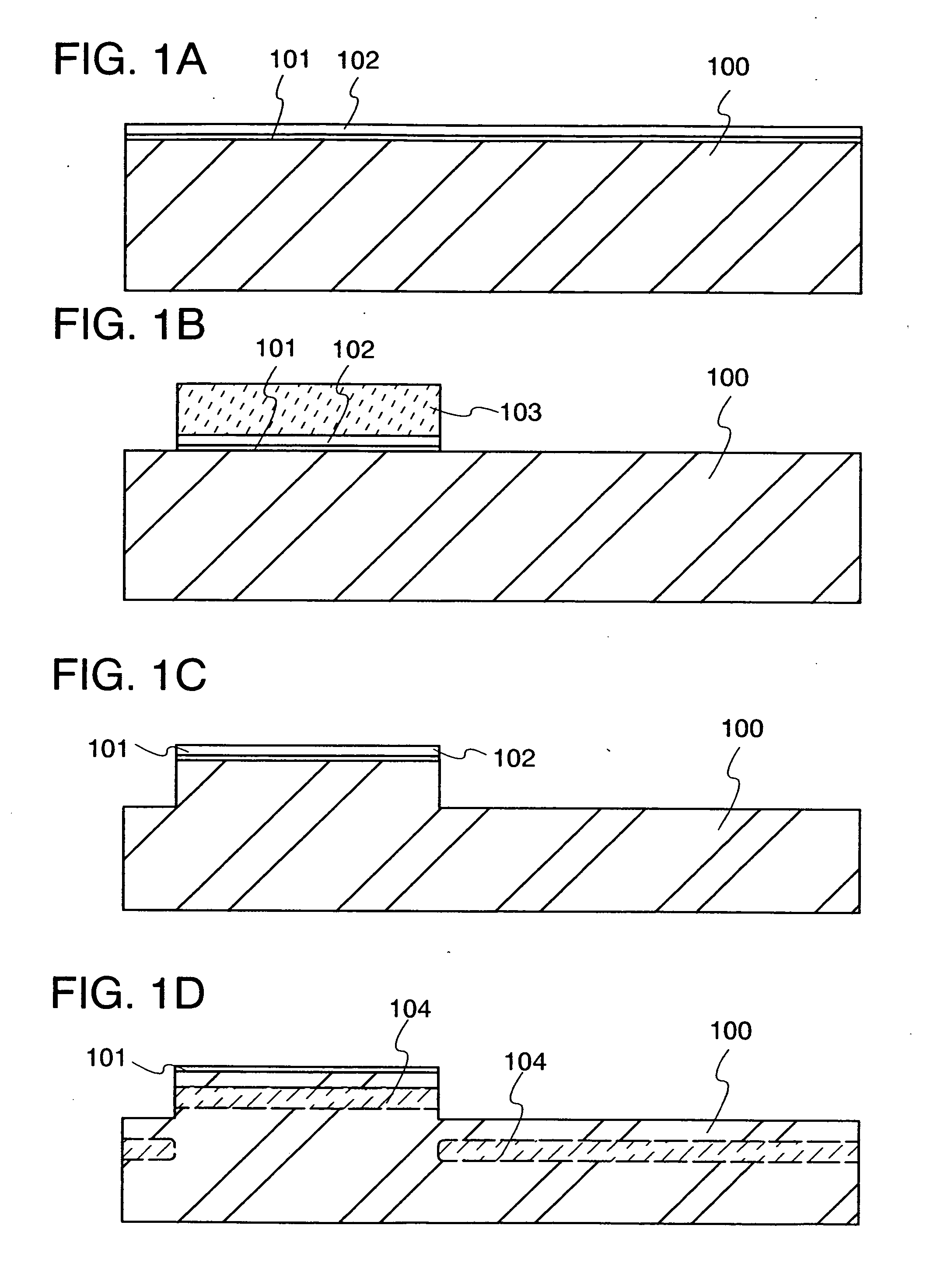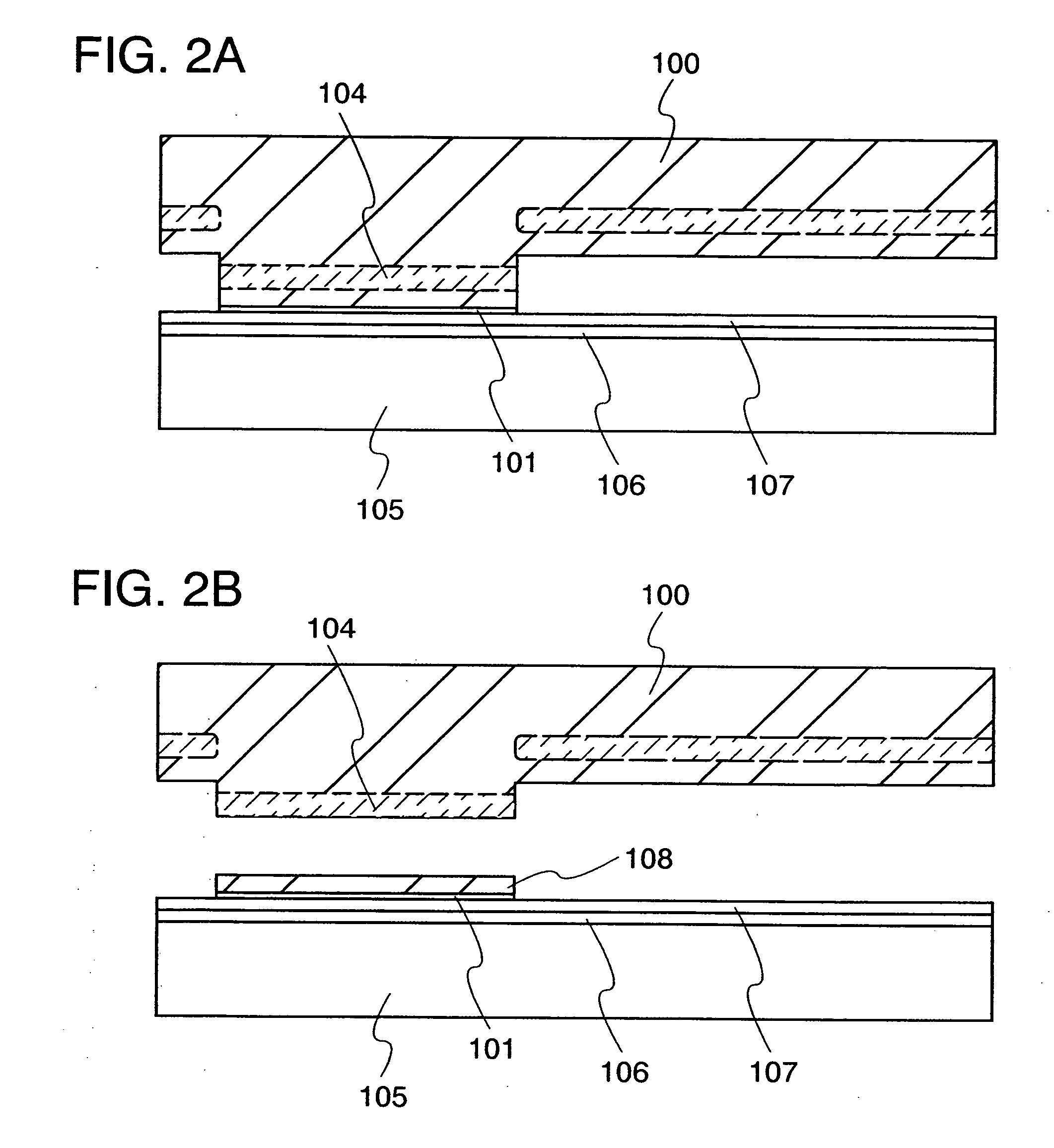Semiconductor device, semiconductor display device, and manufacturing method of semiconductor device
- Summary
- Abstract
- Description
- Claims
- Application Information
AI Technical Summary
Benefits of technology
Problems solved by technology
Method used
Image
Examples
embodiment mode 1
[0068]Embodiment Mode 1 will describe a mode of transferring semiconductor layers which form an n-channel MISFET and a p-channel MISFET from single-crystalline semiconductor substrates having different crystal faces (hereinafter also referred to as bond wafers) to the same surface of a substrate having an insulating surface (hereinafter also referred to as a base substrate). A mode where crystal faces with which mobility of carriers moving in channel length directions is increased are employed for an n-channel MISFET and a p-channel MISFET, that is, a mode where a semiconductor layer whose crystal face is {100} is employed for the n-channel MISFET and a semiconductor layer whose crystal face is {110} is employed for the p-channel MISFET will be described below.
[0069]In order to obtain a single-crystalline semiconductor layer for forming a channel formation region, a source region, and a drain region in the n-channel MISFET, a bond wafer whose crystal face is {100} is used. In order ...
embodiment mode 2
[0084]Embodiment Mode 2 describes a manufacturing process of a bond wafer different from the process shown in FIGS. 1A to 1D, with reference to FIGS. 4A and 4B. In FIG. 4A, a silicon oxide film 101 and a silicon nitride film 102 are formed over a surface of a first bond wafer 100. Then, ions of hydrogen, a rare gas, or both of hydrogen and a rare gas are added, so that a fragile layer 104 is formed in the first bond wafer 100. Next, formation of a groove is conducted as shown in FIG. 4B. In the formation of the groove, the groove is processed to be deeper than the fragile layer 104, so that the fragile layer 104 can remain only in a region of a single-crystalline semiconductor layer which should be transferred. With this structure, transfer can be easily performed.
embodiment mode 3
[0085]Embodiment Mode 3 will describe a manufacturing method of a semiconductor element substrate, in which SOI layers for forming an n-channel MISFET and a p-channel MISFET are transferred from respective bond wafers whose crystal faces are different to the same surface of a base substrate that is a light-transmitting insulating substrate different from the bond wafers. In this embodiment mode, a bond wafer whose crystal face is {100} is used for an n-channel MISFET, and a channel formation region, a source region, and a drain region are formed. Further, a bond wafer whose crystal face is {110} is used for a p-channel MISFET, and a channel formation region, a source region, and a drain region are formed. In this embodiment mode, description is made in the order in which the SOI layer of the n-channel MISFET is transferred to the light-transmitting insulating substrate and then the SOI layer of the p-channel MISFET is transferred to the insulating substrate; however, either of the S...
PUM
 Login to View More
Login to View More Abstract
Description
Claims
Application Information
 Login to View More
Login to View More - R&D
- Intellectual Property
- Life Sciences
- Materials
- Tech Scout
- Unparalleled Data Quality
- Higher Quality Content
- 60% Fewer Hallucinations
Browse by: Latest US Patents, China's latest patents, Technical Efficacy Thesaurus, Application Domain, Technology Topic, Popular Technical Reports.
© 2025 PatSnap. All rights reserved.Legal|Privacy policy|Modern Slavery Act Transparency Statement|Sitemap|About US| Contact US: help@patsnap.com



